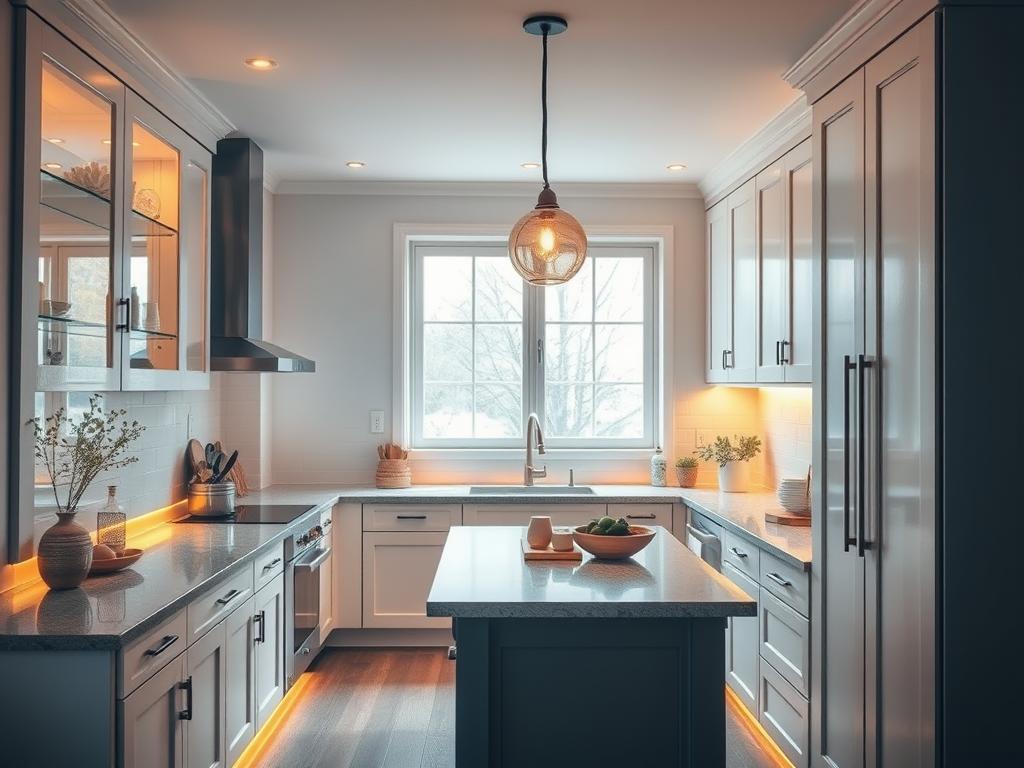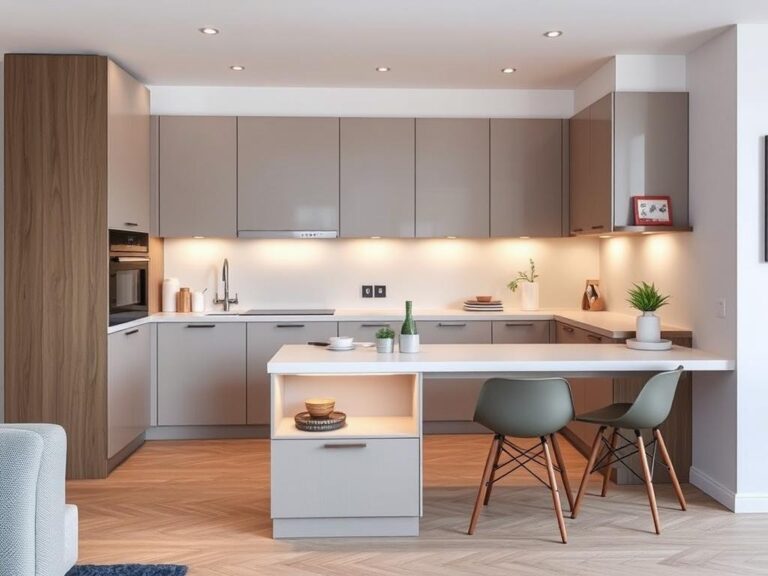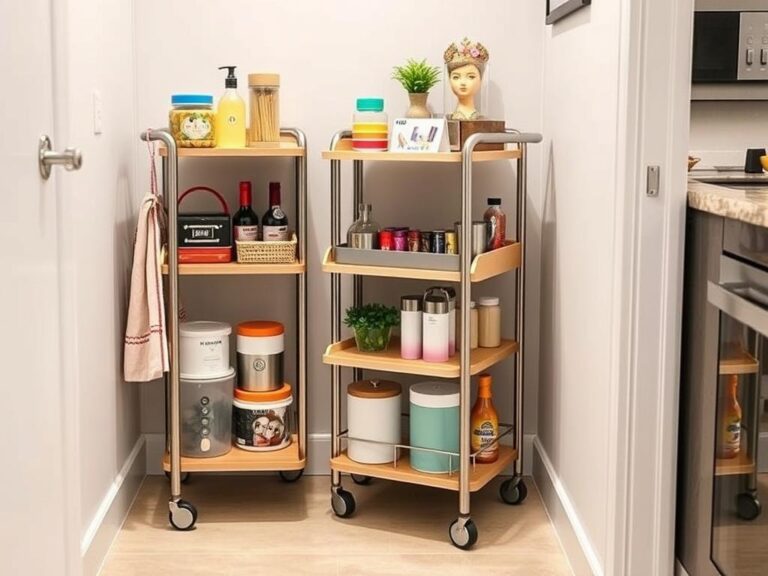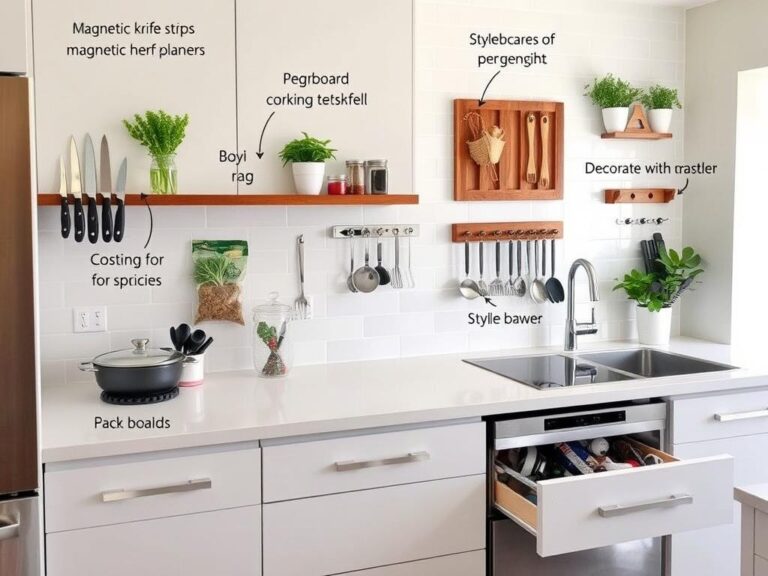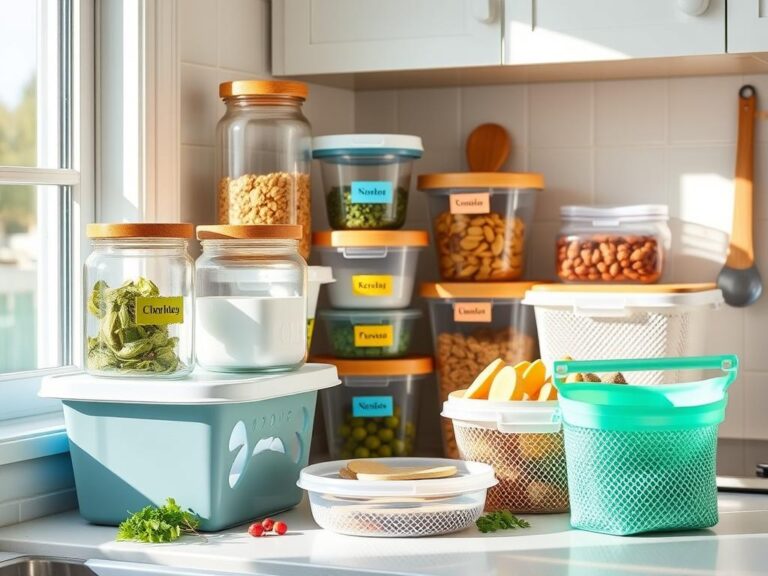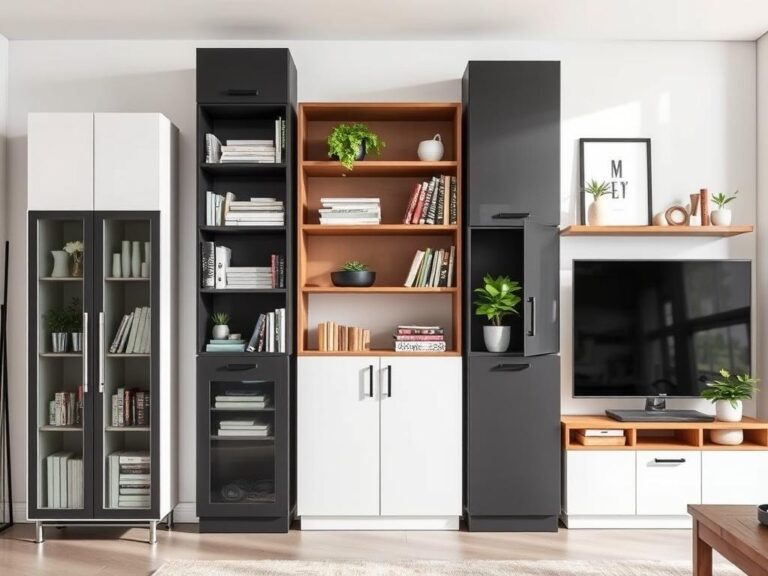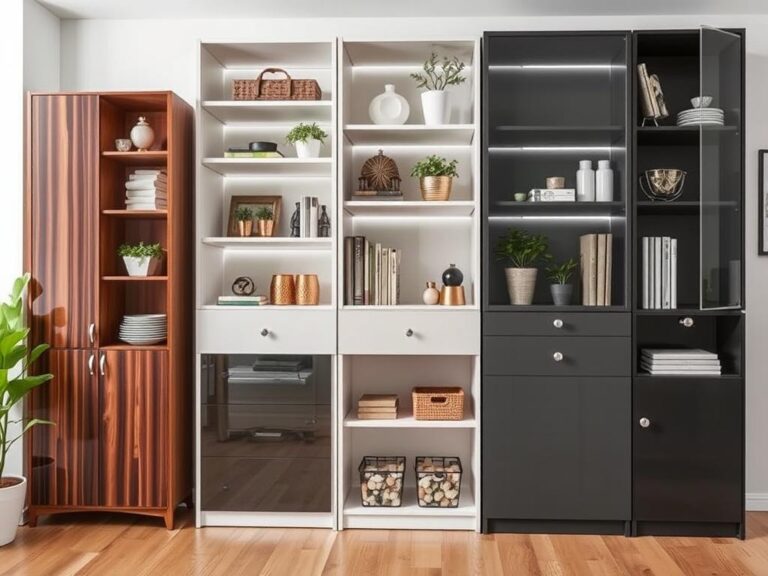15 Small Kitchen Lighting Tricks That Make It Feel Bigger
This post may contain affiliate links which means I may receive a commission for purchases made through links at no extra cost to you. I only recommend products I truly believe in. Thank you for your support!
Struggling with a cramped kitchen? Lighting can be your secret weapon. It can make your kitchen feel bigger. As someone who’s worked on many small kitchens, I’ve found great lighting ideas.
Small kitchen design is not just about size. It’s about making the space look bigger. The right lighting can make your kitchen feel more open and welcoming.
In this guide, I’ll share 15 tricks to make your kitchen feel bigger. We’ll look at how lighting can change your kitchen’s look. It can add depth, brightness, and make it feel bigger without big changes.
These tricks will help you see your kitchen in a new way. They work for any kitchen, big or small. You’ll learn how to make every inch look bigger.
Get ready to use light to make your small kitchen feel bigger and brighter. It will be a space that feels welcoming and open.
Understanding the Importance of Kitchen Lighting
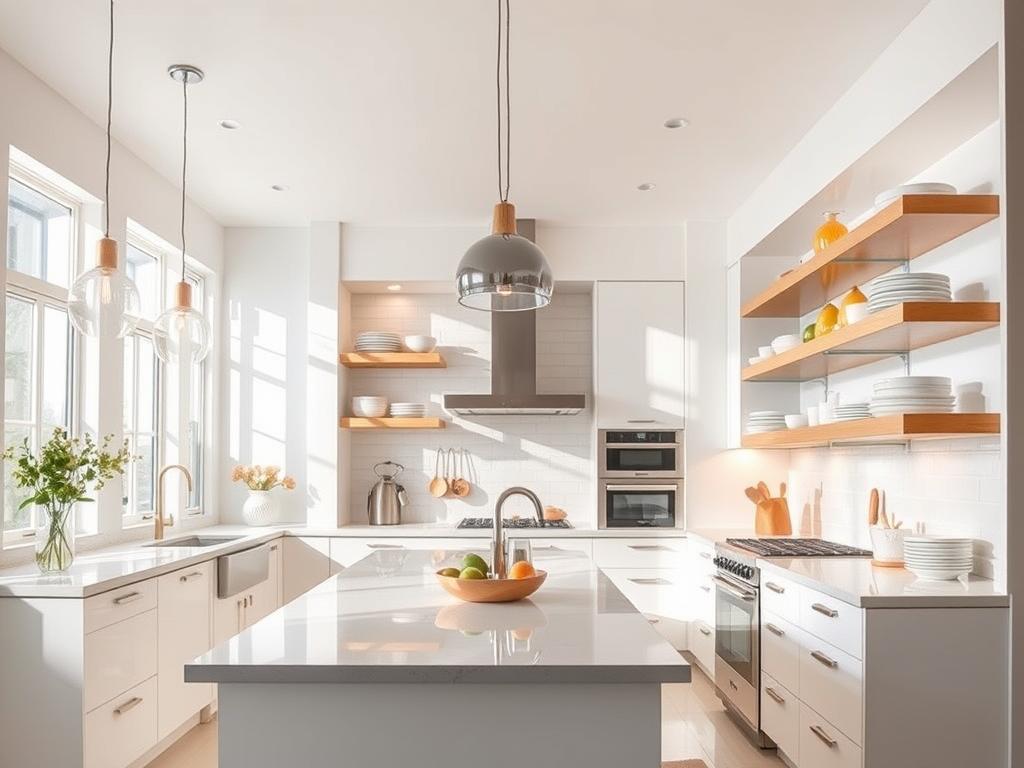
Lighting is key to making small kitchen spaces look bigger. As a design expert, I’ve seen how the right lights can change a small kitchen’s feel. It can make your kitchen feel more open and welcoming.
Let’s look at why lighting is so important in small areas. Good lighting does more than just light up the space. It creates an illusion of spaciousness that makes your kitchen seem much larger.
Why Lighting Matters in Small Spaces
In small kitchens, lighting is a must-have space-saving trick. Here are some important points:
- Recessed lights should be spaced 4-6 feet apart for optimal coverage
- LED bulbs use only 13 watts compared to 60-watt incandescent alternatives
- Aim for 50 footcandles of light on countertops for best visibility
The Psychology Behind Light and Space
Our brains react to light in interesting ways. The color temperature of lighting can change how we see space. Warmer tones (2700K) make spaces cozy, while cooler tones (5000K) make them feel open and bright.
By understanding these brain tricks, you can use lighting to make small spaces look bigger. Smart placement of lights, reflective surfaces, and color choices can change your kitchen’s feel.
Creating bright kitchen interiors is more than just adding lights. It’s about designing a lighting plan that boosts both function and beauty.
Choosing the Right Light Fixtures
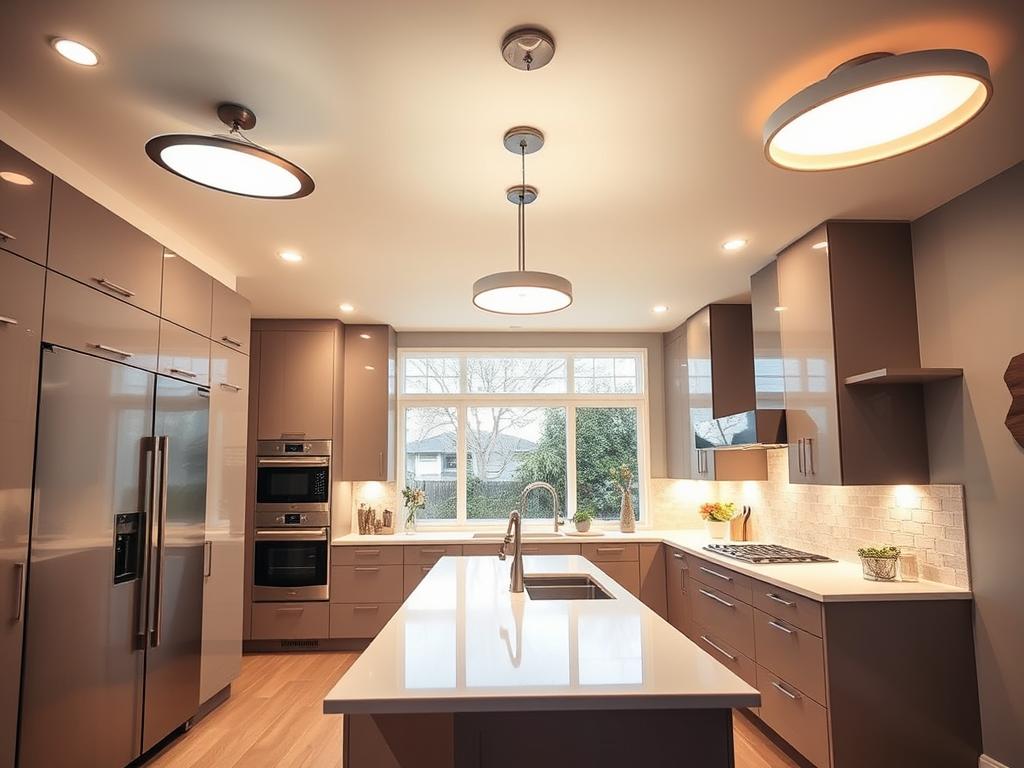
Choosing the right lighting can change a small kitchen from cramped to charming. It’s key to create bright, inviting spaces. Let’s explore some solutions that will make your kitchen shine.
Overhead Lighting Options
Ceiling lights are a big help in small kitchens. They use overhead space well and light up the area. Here are some tips:
- Flush mount fixtures for low ceilings
- Recessed lighting for a sleek, minimalist look
- Mini chandeliers to create visual interest
Installing Wall Sconces
Wall sconces are great for small kitchens. They save space and provide focused lighting. Strategic placement adds depth and dimension.
- Position sconces near work areas
- Choose slim, profile-friendly designs
- Opt for dimmable options for flexible ambiance
Utilizing Pendant Lights
Pendant lights are perfect for small kitchens. They add personality and function to tight spaces.
- Select slim, minimal designs
- Hang at proper height to avoid visual clutter
- Use as focal points in specific kitchen zones
The right lighting can make a small kitchen feel big and welcoming!
Embracing Natural Light
Natural light is a powerful tool for transforming small kitchens. I’ve found that using the right lighting can make small spaces feel bigger. It’s like magic.
Windows are key to brightening your kitchen. I suggest keeping window treatments simple or gone. This lets in more sunlight. Sunlight makes your kitchen feel bigger and more welcoming.
Maximizing Window Space
To make your kitchen look bigger, try these tips:
- Remove heavy curtains and opt for sheer or no window coverings
- Clean windows regularly to maximize light transmission
- Trim exterior bushes or trees blocking natural light
- Consider installing larger windows if possible
Using Mirrors to Reflect Light
Mirrors are a great way to make your kitchen look bigger. I’ve seen that mirrors can reflect light and make your kitchen seem twice as big.
- Install a large mirror opposite your primary window
- Use mirrored backsplashes to amplify light
- Choose mirrors with slim, light-colored frames
- Experiment with multiple smaller mirrors for dynamic light reflection
By using these lighting tricks, you can turn a small kitchen into a bright, spacious area. It will feel welcoming and stylish.
Layering Your Lighting
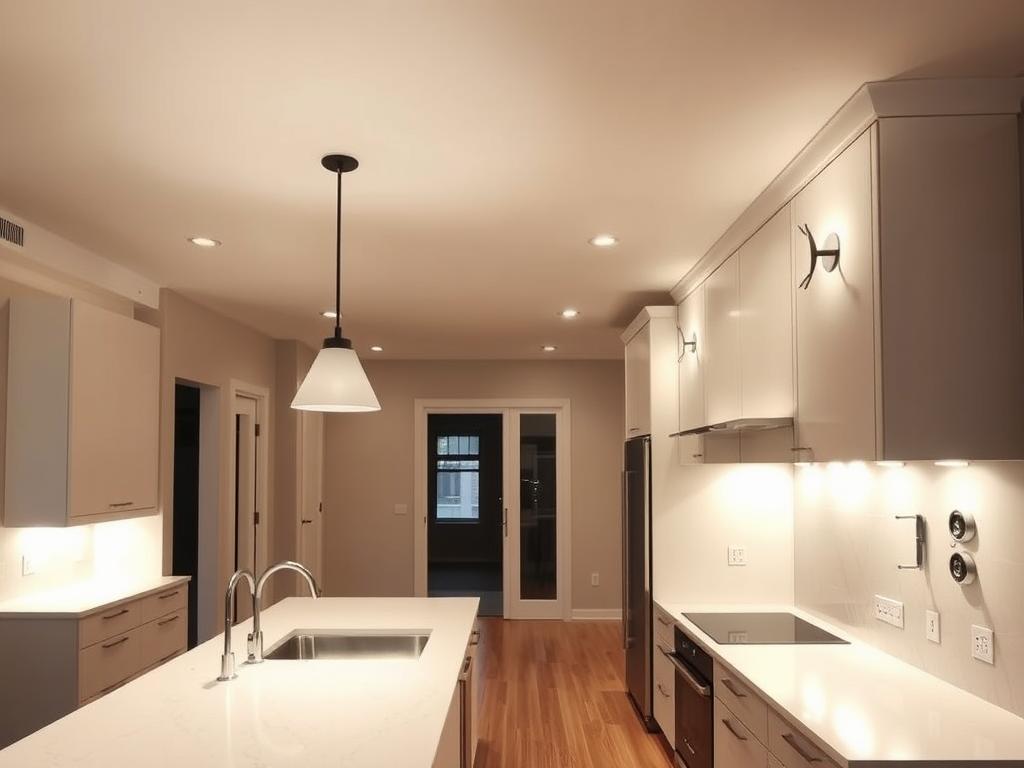
Creating the perfect kitchen lighting design is more than just installing a single fixture. By implementing strategic kitchen lighting ideas, you can transform a small space into a visually expansive and functional environment.
Layered lighting is a powerful technique to maximize small spaces and enhance your kitchen’s overall ambiance. My approach focuses on combining three essential lighting types to create depth and dimension.
The Three Layers of Kitchen Lighting
- Ambient Lighting: Provides overall illumination and forms the foundation of your kitchen’s lighting plan
- Task Lighting: Focuses on specific work areas like countertops and cooking zones
- Accent Lighting: Highlights architectural features and adds visual interest
Creating Depth with Multiple Light Sources
Strategic lighting techniques can dramatically alter your kitchen’s perceived size. By using multiple light sources at different heights and angles, I’ve discovered ways to make even the smallest kitchens feel more spacious and inviting.
- Install under-cabinet LED strips for subtle illumination
- Use adjustable pendant lights above work areas
- Add wall sconces to create visual depth
- Incorporate dimmable recessed lights for flexible brightness
Remember, the key is balance. Too many light sources can overwhelm a small kitchen, while too few can make the space feel cramped and dark. Experiment with different lighting combinations to find your perfect solution.
Smart Bulb Choices
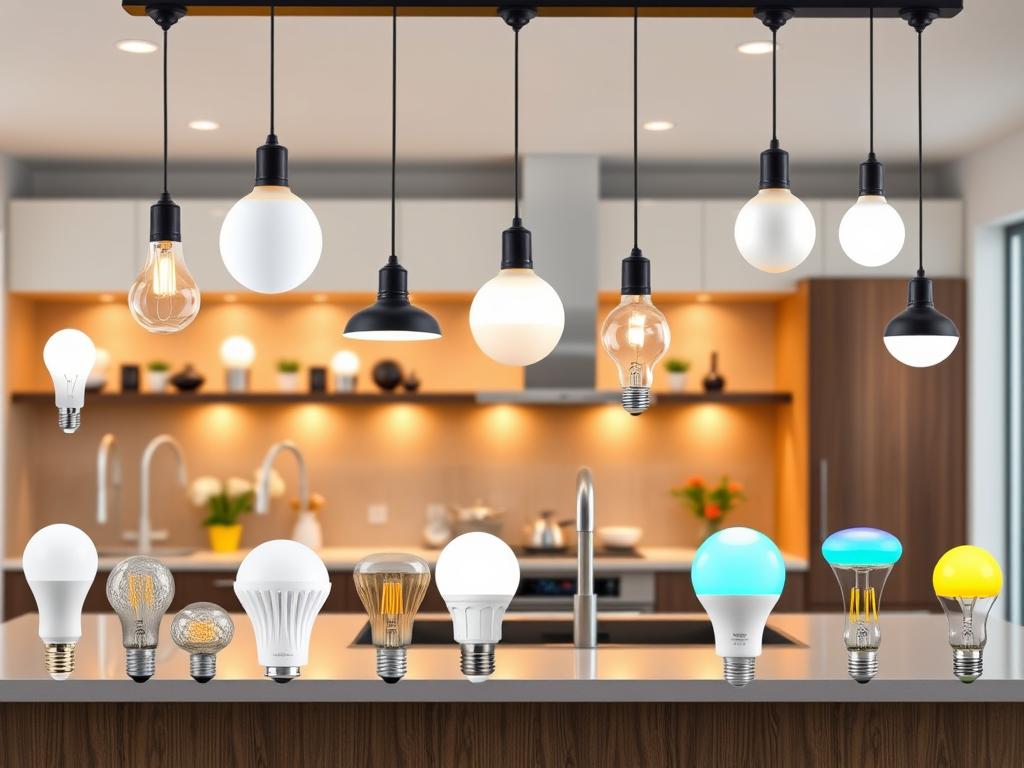
When designing bright kitchen interiors, picking the right lighting is key. Smart bulbs are great for making small kitchens look bigger.
Smart LED bulbs are a big deal for kitchen lighting. They let you change the mood and make the space look bigger.
Brightness and Color Temperature Insights
Smart LEDs are super flexible. They can switch from soft, warm light to bright, cool light. This lets you control your kitchen’s feel.
| Bulb Type | Lumens | Color Temperature Range |
|---|---|---|
| WiZ Smart LED | 800-1,100 | 2700K-6500K |
| Meross Smart Wi-Fi LED | 800-1,000 | 2700K-5000K |
Dimming Options for Maximum Flexibility
Dimmable smart bulbs give you total control over your kitchen’s light. Here’s why it’s great:
- They can cut energy use by up to 90%
- You can create different lighting scenes
- Control them with your phone
- They work with smart home systems
My top pick is the circadian-rhythm mode. It changes the light to match your day. This makes your kitchen more comfy.
Pro tip: Choose bulbs that can change colors and have cool effects. The WiZ smart bulb, for example, has 19 themes to change your kitchen’s vibe.
Utilizing LED Strip Lights
LED strip lights are a game-changer for small kitchens. They save space and make tight areas look bigger. These lights change how you see your kitchen, making it more open and useful.
LED strip lights are a smart way to light up small kitchens. They are easy to place and add depth and interest. This makes your kitchen look modern and well-lit.
Under Cabinets and Shelves
Putting LED strips under cabinets gets rid of shadows and adds depth. These lights do a lot:
- Illuminate work surfaces with precision
- Enhance kitchen functionality
- Create a modern, streamlined appearance
Around Architectural Features
LED lights around special features change your kitchen’s look. Use them to:
- Highlight crown molding
- Accentuate cabinet kick plates
- Create vertical visual lines that expand perceived space
| LED Strip Location | Visual Effect |
|---|---|
| Under Cabinet | Eliminates shadows, increases workspace visibility |
| Behind Shelves | Creates depth, adds dimensional interest |
| Along Architectural Edges | Draws eye upward, makes kitchen feel larger |
Using these smart lighting tricks, you can make your small kitchen bright and welcoming. It will feel much bigger.
Color and Finish Considerations
When designing small kitchen spaces, the color and finish of your lighting fixtures are key. They help create an illusion of spaciousness. I’ve found some strategies that can make even the smallest kitchen feel bright and airy.
Choosing Light-Colored Fixtures
White kitchens are a top trend for making small spaces look bigger. I suggest picking lighting fixtures in light colors. These reflect and amplify available light, greatly impacting your kitchen’s design:
- Opt for white or metallic fixtures that bounce light around the room
- Select glossy finishes that create a luminous effect
- Choose fixtures with minimal visual weight
The Impact of Reflective Surfaces
Reflective surfaces are great for lighting small kitchens. Materials like stainless steel, glass tiles, and polished countertops make a big difference:
- Ceramic tiles that catch and reflect light
- Marble countertops with natural reflective qualities
- Stainless steel appliances that amplify brightness
By choosing light-colored fixtures and adding reflective surfaces, you can make your kitchen bright and open. It will feel much larger than it is. The trick is to balance these elements well, making your kitchen a welcoming, luminous space.
Maintenance for Optimal Lighting
Keeping your kitchen lighting in top shape is key for bright interiors. Regular maintenance boosts your lighting’s effectiveness. With a few simple steps, your kitchen will stay bright and beautiful.
Fixture Cleaning Essentials
Dust and grease can dull your kitchen lights. Use a microfiber cloth for delicate fixtures like pendant lights and sconces. For glass shades, warm water and mild dish soap is best.
Always turn off the power before cleaning. Let fixtures dry completely before reconnecting.
Bulb Replacement Strategy
Replacing bulbs is more than just changing a light source. It’s about keeping your kitchen well-lit. LED bulbs are great for kitchens because they’re energy-efficient and last long.
When picking new bulbs, choose the right color temperature (2700K-3000K for a warm kitchen) and wattage for each fixture.
Pro tip: Make a maintenance schedule. Clean fixtures every quarter and check bulbs once a year. This keeps your kitchen lighting perfect, making even small kitchens feel bright and welcoming.
